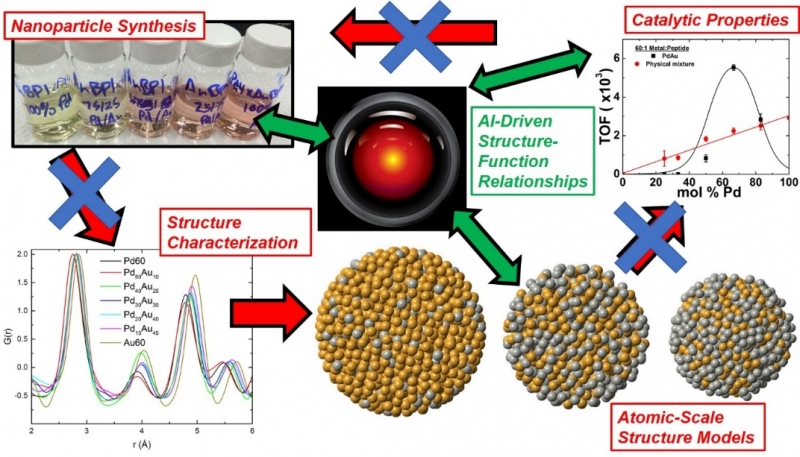Since the announcement of the Materials Genome Initiative by President Obama in 2013 (https://goo.gl/g4ji52), materials informatics has been the hottest topic in manufacturing. In this regard, this project aims to use the power of data science coupled synchrotron radiation characterization methodologies to solve the synthesis-structure-function relationship problem for multimetallic nanocatalysts. The combination of multiple metal species within a single catalyst often leads to synergistic enhancements in catalytic properties (reactivity, longevity, selectivity and/or cost). As all “as-synthesized” nanoparticles include heterogenous sizes and structural defects, many discoveries to date are made serendipitously without understanding how atomic scale structure can be tuned by synthetic conditions or how the resulting structures influence catalytic properties. To date, all efforts to develop the requisite fundamental knowledge are often done on a “case by case” basis, wherein a hypothesis is tested against a small set of samples and conditions with the goal of understanding key fundamental knowledge to help improve catalytic performance. The rate to which this loop is completed is often limited by the bandwidth of the experimenter(s) and requisite time needed to develop meaningful observations.
The incorporation of data science aims to enhance such processes by pulling from rich datasets generated from such experiments to increase meaningful discoveries in catalysis (see Figure below). The ability to tune multimetallic nanoparticles in composition, size and surface ligand provides a strong starting basis of data ripe for high throughput synthesis. Subsequent structure modelling, built from one or more synchrotron characterization datasets, provides atomic coordinates and chemistry ripe for data science analytics, while catalytic outcomes provide an end goal metric for dictating future materials development.
This project is a collaborative effort between Data61 at CSIRO and UNSW. A prospective student will focus heavily on the data science methodologies needed to accomplish such a task at Data61, along with structural modelling of synchrotron datasets. Participation in synchrotron experiments is optional, albeit a useful endeavour that does not require much experience in chemistry.
Prospective students are encouraged to contact Dr. Nicholas Bedford (n.bedford@unsw.edu.au) at their earliest convenience. The project is partially supported by CSIRO top-up scholarship, with more information found here: https://jobs.csiro.au/job/Various-CSIRO-Postgraduate-Scholarships-Data61...
